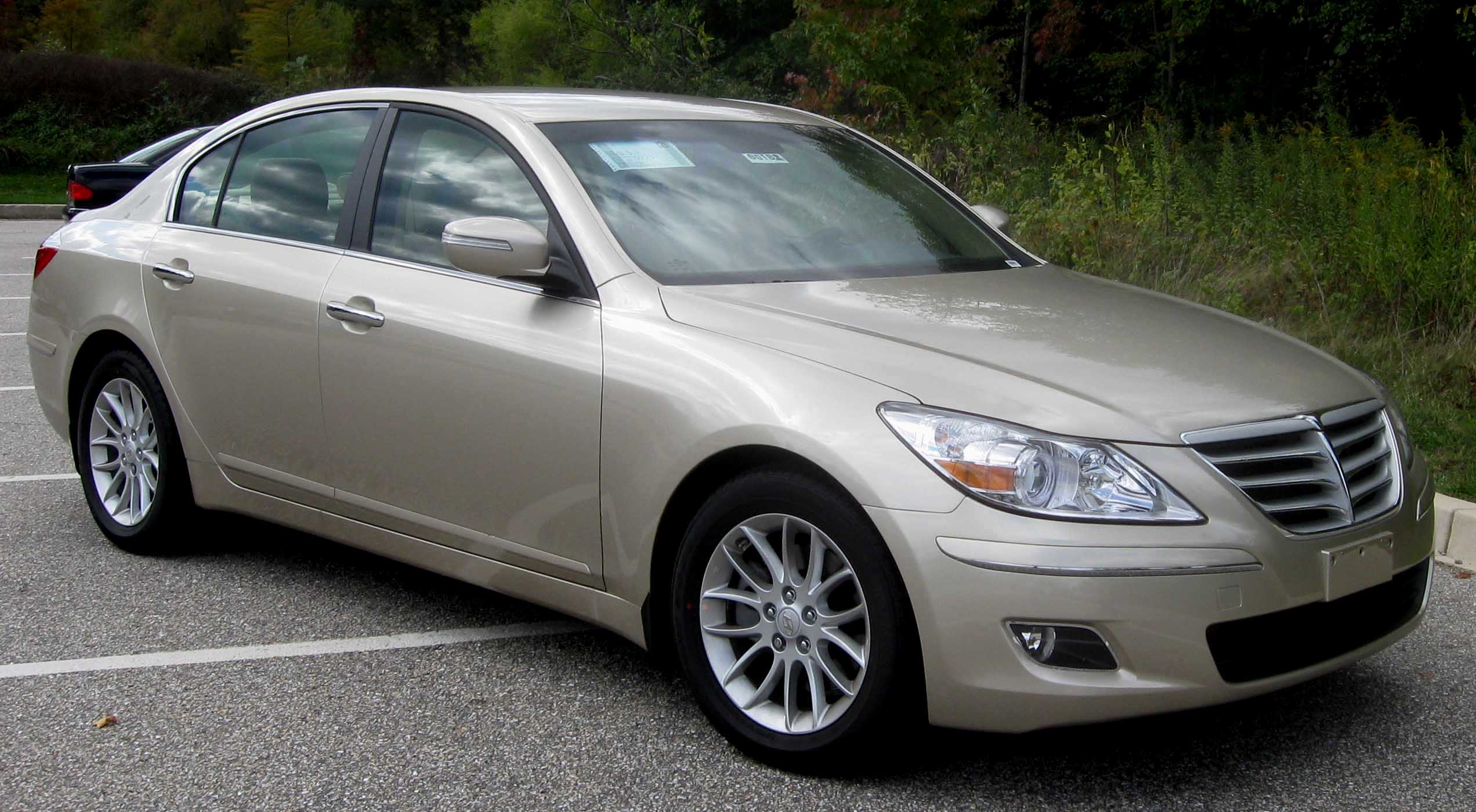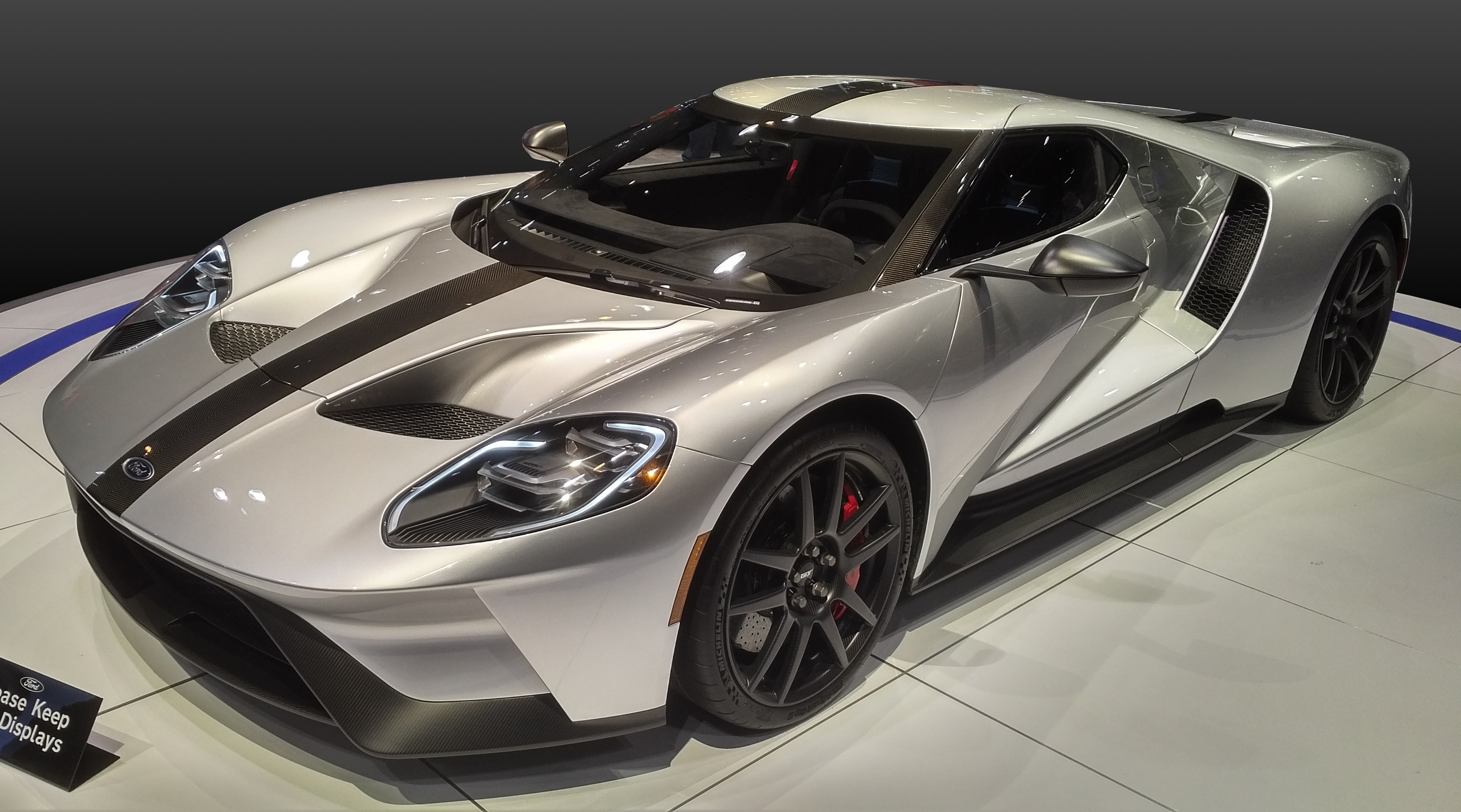|
Mid-engine, Four-wheel-drive Layout
In automotive design, an M4, or Mid-engine, Four-wheel-drive layout places the internal combustion engine in the middle of the vehicle, between both axles and drives all four road wheels. It is a type of car powertrain layout. Although the term " mid-engine" can mean the engine is placed anywhere in the car such that the centre of gravity of the engine lies between the front and rear axles, it is usually used for sports cars and racing cars where the engine is behind the passenger compartment. The motive output is then sent down a shaft to a differential in the centre of the car, which in the case of an M4 layout, distributes power to both front and rear axles. The centre differential contained within many 4 wheel drive cars is similar to the conventional differential in a 2-wheel drive car. It allows torque to be distributed to both drive axles whilst allowing them to spin at different speeds, which vastly improves the cornering of a 4-wheel drive car on surfaces with h ... [...More Info...] [...Related Items...] OR: [Wikipedia] [Google] [Baidu] |
Rear-wheel-drive
Rear-wheel drive (RWD) is a form of engine and transmission layout used in motor vehicles, in which the engine drives the rear wheels only. Until the late 20th century, rear-wheel drive was the most common configuration for cars. Most rear-wheel drive vehicles feature a longitudinally-mounted engine at the front of the car. Layout The most common layout for a rear-wheel drive car is with the engine and transmission at the front of the car, mounted longitudinally. Other layouts of rear-wheel drive cars include front-mid engine, rear-mid engine, and rear-engine. Some manufacturers, such as Alfa Romeo, Lancia, Porsche (944, 924, 928) and Chevrolet (C5, C6, and C7 Corvettes), place the engine at the front of the car and the transmission at the rear of the car, in order to provide a more balanced weight distribution. This configuration is often referred to as a transaxle since the transmission and axle are one unit. History 1890s to 1960s Many of the cars built in the 19th cent ... [...More Info...] [...Related Items...] OR: [Wikipedia] [Google] [Baidu] |
Koenigsegg Gemera
The Koenigsegg Gemera is a limited production four-seat plug-in hybrid grand tourer (or 2-door sports saloon) to be manufactured by the Swedish automobile manufacturer Koenigsegg. It was unveiled on 3 March 2020 at an online broadcast by Koenigsegg at the cancelled Geneva Motor Show. Specifications The Gemera is the company's first four-seater car. Power plant The hybrid power train uses a pair of updated hot-V variants of the 5.0-litre twin-turbo HV8 from the Jesko. The HV8 powertrain has a combined power output of and of torque when the engine runs on E85 fuel. The HV8 engine is mated to a 9-speed Light Speed Tourbillon Transmission (LSTT), a modified version of the 9-speed Light Speed Transmission found in the Jesko; while the I3 engine was mated to a direct drive (single-speed transmission). Electric motors Three electric motors are included, one for each rear wheel with and 1000 Nm each and the Deep Matter motor on the front axle with 600 kW (800 hp) and 1 ... [...More Info...] [...Related Items...] OR: [Wikipedia] [Google] [Baidu] |
Ferrari SF90 Stradale
The Ferrari SF90 Stradale (Type F173) is a mid-engine PHEV (plug-in hybrid electric vehicle) sports car produced by the Italian automobile manufacturer Ferrari. The car shares its name with the SF90 Formula One car with 90 standing for the 90th anniversary of the Scuderia Ferrari racing team and "Stradale", an Italian word for "made for the road". Design The manufacturer claims that the SF90 Stradale can generate of downforce at due to new findings in aero and thermal dynamics. The main feature of the design is the twin-part rear wing which is an application of the drag reduction system (DRS) used in Formula One. A fixed element in the wing incorporates the rear light, the mobile parts of the wing (called "shut off Gurney" by the manufacturer) integrate into the body by using electric actuators in order to maximise downforce. The SF90 Stradale uses an evolution of Ferrari's vortex generators mounted at the front of the car. The car employs a cab-forward design in order to u ... [...More Info...] [...Related Items...] OR: [Wikipedia] [Google] [Baidu] |
Honda NSX (second Generation)
The second-generation Honda NSX (''New Sports eXperience''; model code NC1), marketed as the Acura NSX in North America, China and Kuwait, is a two-seater, all-wheel drive, Mid-engine design, mid-engine hybrid electric vehicle, hybrid electric sports car developed and manufactured by Honda. The car was developed in collaboration between the company's divisions in Japan and the United States, and all models were hand-built at a dedicated factory in Ohio. Production began in 2016 and ended in 2022 with the Acura A-Spec and Type-S models, Type S variant. It succeeds the Honda NSX (first generation), first-generation NSX that was produced in Japan from 1990 to 2005. The development team aimed to make the car suit a wide range of driving conditions, from high-performance driving on winding roads and racetracks to more relaxed street driving. The car is powered by a bespoke 3.5-liter twin-turbocharged V6 engine producing , supplemented by three Electric motor, electric motors to bring ... [...More Info...] [...Related Items...] OR: [Wikipedia] [Google] [Baidu] |
Bugatti Veyron
The Bugatti Veyron EB 16.4 is a mid-engine sports car designed and developed in Germany by the Volkswagen Group and Bugatti, and manufactured in Molsheim, France by French automobile manufacturer Bugatti. It was named after the racing driver Pierre Veyron. The original version has a top speed of . It was named the 2000s Car of the Decade by the BBC television programme '' Top Gear''. The standard Veyron also won ''Top Gear''s Best Car Driven All Year award in 2005. The Super Sport version of the Veyron is one of the fastest street-legal production cars in the world, with a top speed of . The Veyron Grand Sport Vitesse was the fastest roadster in the world, reaching an averaged top speed of in a test on 6 April 2013. The production car speed record was later taken by another Bugatti, the Chiron, and then often changed hands for a while. The Veyron's chief designer was Hartmut Warkuß, with the exterior being designed by Jozef Kabaň of Volkswagen. Much of the engineering ... [...More Info...] [...Related Items...] OR: [Wikipedia] [Google] [Baidu] |
Supercar
A supercar, also known as an exotic car, is a street-legal sports car with race track-like power, speed, and handling, plus a certain subjective ''cachet'' linked to pedigree and/or exclusivity. The term 'supercar' is frequently used for the extreme fringe of powerful, low-bodied mid-engine luxury sportscars. A low-profile car may have limited ground clearance, but a handling-favorable center of gravity and a smaller frontal area than a front engined car. These characteristics can reduce supercars' aerodynamic drag, enabling higher top speeds. Since the 2000s, the term hypercar has come into use for the highest-performance supercars. Supercars often serve as the flagship model within a vehicle manufacturer's sports car range and typically feature various performance-related technology derived from motorsports. Some examples include the Ferrari 458 Italia, Lamborghini Aventador, and McLaren 720S. Automotive journalism typically reserves the predicate 'hypercar' for l ... [...More Info...] [...Related Items...] OR: [Wikipedia] [Google] [Baidu] |
Lamborghini Diablo
The Lamborghini Diablo (meaning "devil" in Spanish), is a series of high-performance V12, rear mid-engined sports cars in the supercar market segment, built by Italian automobile manufacturer Lamborghini from 1990 through 2001. It is the first production Lamborghini with a top speed in excess of . In 1993, the Diablo VT (for 'Viscous Traction') became Lamborghini's first all-wheel drive production sportscar. The car retained its rear-wheel drive character, but a computer-modulated system could direct up to 25% of the engine's torque to the front wheels in case of rear-axle slip, to improve the car's handling. In 1995, Lamborghini also began building their first open-top V12, in the form of a Diablo roadster. During the later years, a number of special editions were built, typically in very small numbers. After the end of its production run in 2001, the Diablo was replaced by the Lamborghini Murciélago. History of development At a time when the company was financed by the Sw ... [...More Info...] [...Related Items...] OR: [Wikipedia] [Google] [Baidu] |
Group B
Group B was a set of regulations for Grand tourer, grand touring (GT) cars used in sports car racing and rallying introduced in 1982 by the Fédération Internationale de l'Automobile (FIA). Although permitted to enter a GT class of the World Sportscar Championship alongside the faster and more popular Group C Sports prototype, prototypes, Group B cars are commonly associated with international rallying during 1982 World Rally Championship, 1982 to 1986 World Rally Championship, 1986, when they were the highest class used in the World Rally Championship (WRC) and regional and national rally championships. The Group B regulations fostered some of the fastest, most powerful, and most sophisticated rally cars ever built, and their era is commonly referred to as the golden era of rallying.''Top Gear'' websiteThe corner that killed Group B However, a series of major accidents, some fatal, were believed to be caused by their outright speed. There was also a major lack of crowd control ... [...More Info...] [...Related Items...] OR: [Wikipedia] [Google] [Baidu] |
Peugeot 205
The Peugeot 205 is a four-passenger, front-engine, supermini ( B-segment) car manufactured and marketed by Peugeot over a sixteen-year production run from 1983 to 1999, over a single generation. Developed from ''Projet'' M24 and introduced on 25 February 1983, the 205 replaced the Peugeot 104 and the Talbot Samba, using major elements from their design. It won '' What Car?'' Car of the Year for 1984. It was also declared "car of the decade" by CAR Magazine in 1990. Peugeot stopped marketing the 205 in 1999 in favor of its new front-engined 206. The 106, which was introduced in 1991, effectively took over as Peugeot's smaller front-engined model in their lineup. The latter was developed as a close sibling of the Citroën AX, sharing many components and a platform that later evolved into the Citroën Saxo. History Before the 205, Peugeot was considered the most conservative of France's "big three" car manufacturers, producing large saloons such as the 504 and 505, altho ... [...More Info...] [...Related Items...] OR: [Wikipedia] [Google] [Baidu] |
Trunk (automobile)
The trunk (American English) or boot (British English) of a car is the vehicle's main storage or cargo compartment, often a hatch at the rear of the vehicle. It can also be called a tailgate. In Indian English the storage area is known as a dickey (also spelled dicky, dickie, or diggy), and in Southeast Asia as a compartment. Designs The trunk or luggage compartment is most often at the rear of the vehicle. Early designs had an exterior rack on the rear of the vehicle to attach a luggage trunk. Later designs integrated the storage area into the vehicle's body, and eventually became more streamlined. The main storage compartment is normally provided at the end of the vehicle opposite to which the engine is located. Some vehicles have the trunk in front of the passenger compartment, e.g. rear-engined cars like Volkswagen Beetle and Porsche 911, or electric vehicles like Ford F-150 Lightning. This is known as a frunk, a portmanteau of the words "front" and "trunk". Th ... [...More Info...] [...Related Items...] OR: [Wikipedia] [Google] [Baidu] |







